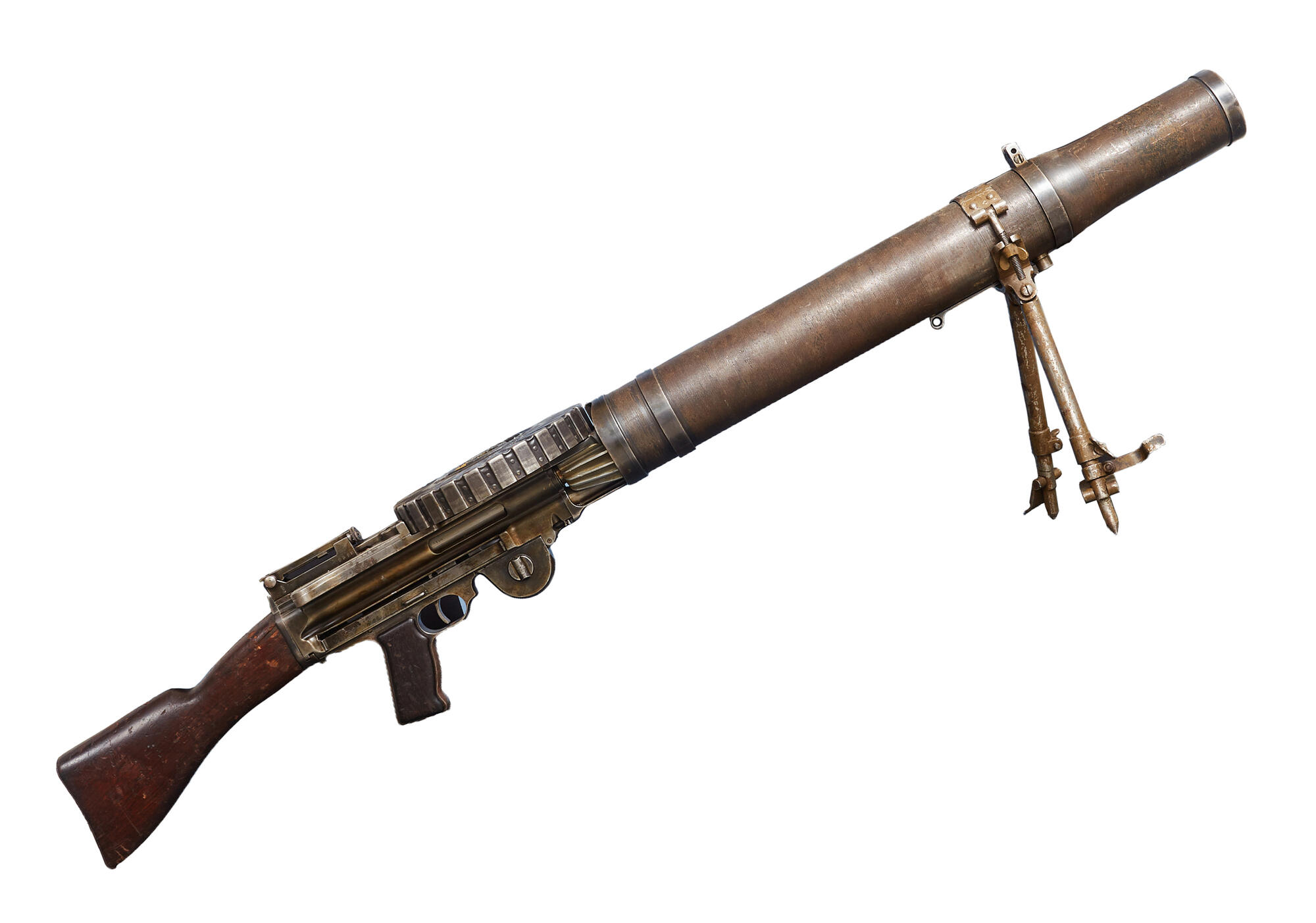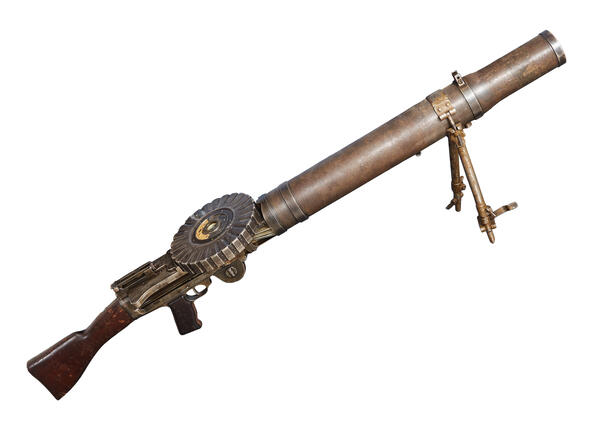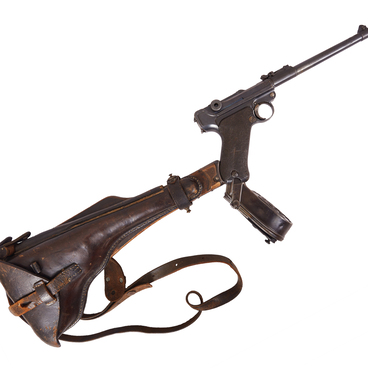Due to the low weight, simplicity and reliability of the design, combined with its impressive rate of fire, the Lewis light machine gun quickly became widespread in the infantry. Its aircraft variant was also in high demand. The machine gun was designed by Colonel Isaac Lewis, an armament specialist of the US Army. He came up with an original air-cooling system, and for any automatic weapon, intense heat generation is a serious problem.
The barrel of the machine gun was fitted with an aluminum heat sink, enclosed by a large cylindrical shroud. When shooting, the powder gases, coming out of the barrel at high speed, sucked cold air into the shroud, which, passing through the finned heat sink, cooled the barrel. Lewis retired from the U.S. Army and moved to Europe. There he showed his invention to Belgian businessmen. The machine gun proved to be a great weapon and as a result an agreement was signed. It established the company “Armes Automatic Lewis” for the production of the Lewis machine gun in Europe.
But the only manufacturer that was able to provide the necessary production facilities was the English firm “Birmingham Small Arms” (BSA). Thorough tests were carried out, and despite some problems with overheating, the machine gun was received positively. The weapon was recommended for service. The aircraft version was tested by the Royal Flying Corps and the Royal Naval Air Service. It was established that the machine gun was one of the best models of aircraft weapons.
The design of the Lewis gun intended for infantry use practically did not change until the end of World War I, but the aircraft version underwent modifications. For instance, the rifle butt was replaced with a “handle” of the “Maxim” type. It was more convenient when handling a machine gun mounted on a turret.
The spent cartridges flying overboard damaged the
fabric covering of the aircraft. When firing from aircraft with rear-mounted
engines, they could also damage the propeller. The BSA company, after receiving
complaints, began the production of bags for spent cartridges. The 47-round pan
magazine also turned out to be too small for aerial shooting: it was often
difficult for pilots to change it while wearing thick gloves. In 1916, a new
bigger 97-round magazine was developed.



